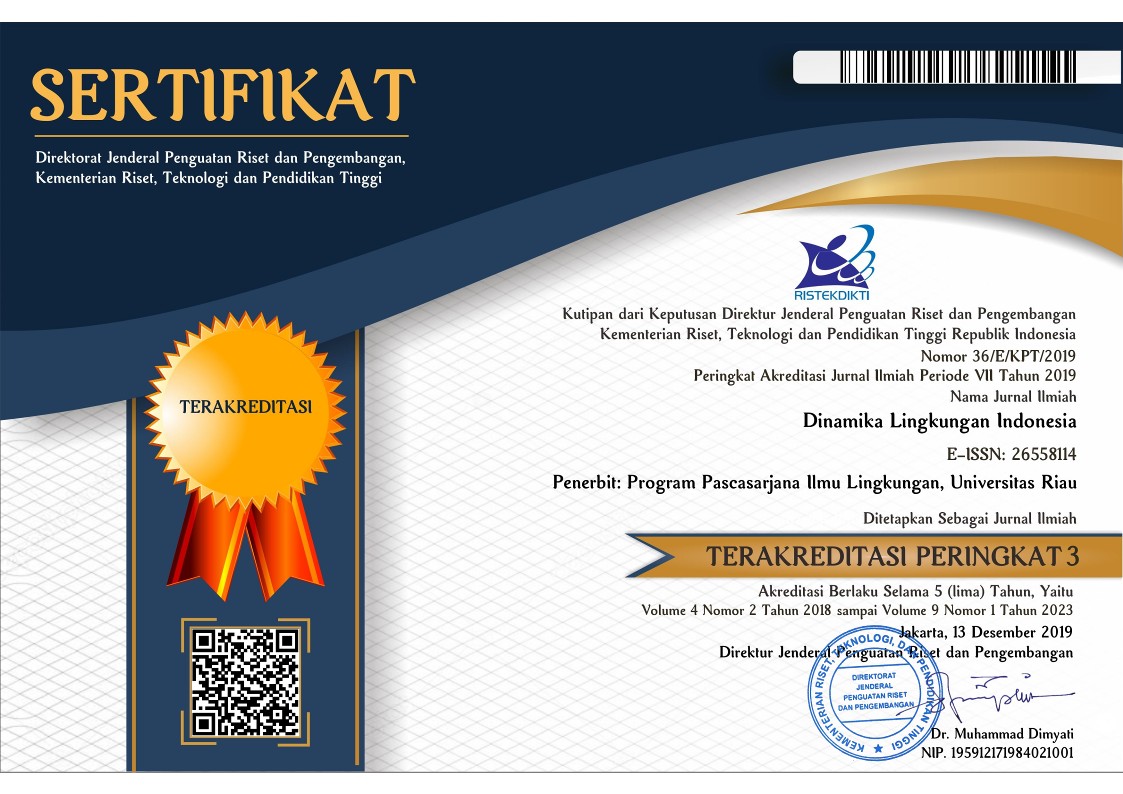Keunggulan Bersaing Berkelanjutan Berbasis Inovasi dan Kearifan Lokal Pada Usaha Kecil dan Menengah Makanan Tradisional di Pekanbaru
Abstract
Business actors' competition in capturing market share has made it essential for business actors to implement sustainable competitive advantage through local wisdom and innovation. It is expected to improve product quality sustainably. This study aims to analyze sustainable competitive advantage based on local wisdom and innovation in small and medium enterprises of Riau Malay traditional food in Pekanbaru. The research method used is qualitative with observation, interview, and literary techniques. The sampling technique used was purposive sampling on ten business actors and triangulation as the analysis technique in this study. This study's findings are that local wisdom factors and product innovation are a source of sustainable competitive advantage in the micro and small business sector of Riau Malay traditional food in Pekanbaru. Although innovations made in traditional Riau Malay food products, this has not made the product more homogeneous but still thick with its uniqueness and authenticity. The resources owned's heterogeneity is reflected in local knowledge, local skills, local resources, and local values in traditional Riau Malay food products, a differentiator that competitors cannot imitate.
Keywords
Full Text:
PDFReferences
Amabile, T. M. (1996). Assesing The Work Environment For Creativity.” Academy of Management Journal., 1154–1184.
Amit, R., & Schoemaker, P. J. (1993). Strategic assets and organisational rent. Strategic Management Journal, 14(June 1990), 33–46. https://doi.org/10.1002/smj.4250140105
Barney, J. (1991). Firm Resources and Sustained Competitive Advantage. Journal of Management, 17(1), 99–120. https://doi.org/10.1177/014920639101700108
Barney, J. B. (2007). Gaining and Sustaining Competitive Advantage. 3ed. Pearson International Education Inc., Publishing as Prentice-Hall Upper Saddle River, New Jersey, 07458, USA.
Barney, J. B. O. S. U. (2001). 4. Resource-based theories of competitive advantage by Barney 2001.pdf. Journal of Management, 27, 643–650.
Das, T. K., & Teng, B.-S. (2000). A Resource-Based Theory of Strategic Alliances. Journal of Management, 26(1), 31–61. https://doi.org/10.1177/014920630002600105.
Dismawan, R. (2016). Pengaruh kreativitas produk dan inovasi produk terhadap keunggulan bersaing. Jurnal Manajemen., 2(3).
Hubert Gatignon and Jean-Marc Xuereb. (1997). Strategic Orientation of the Firm and New Product Performance. Journal of Marketing Research Publications, Inc., 34(1), 77–90.
Ife, jim. (2002). Community Development: Community Based alternative in an Age of globalization. Australia: Parson education.
Kotler, P. (2009). Manajemen Pemasaran : Analisis, Perencanaan dan Implementasi Dan Kontrol,. Erlangga, Jakarta.
Lee, J., & Hsieh, C. (2010). A Research In Relating Entrepreneurship, Marketing Capability, Innovative Capability And Sustained Competitive Advantage. 8(9), 109–120.
Mardatillah, A., Raharja, S. J., Hermanto, B., & Herawaty, T. (2019). Riau Malay food culture in Pekanbaru, Riau Indonesia: Commodification, authenticity, and sustainability in a global business era. Journal of Ethnic Foods, 6(1), 1–10. https://doi.org/10.1186/s42779-019-0005-7.
Mardatillah, A., & Ramadani, S. A. (2020). Sustainable Competitive Advantage of Riau Malay Weaving Industry Based on Local Wisdom. International Research Journal of Business Studies, 13(3), 227–240.
Nonaka, I. and Takeuchi, H. (1995). The Knowledge-Creating Company: How Japanese Companies Create the Dynamics of Innovation. Oxford University Press, Oxford.
Papp, R., & Luftman, J. (1995). Business and I / T Strategic Alignment : New Perspectives and Assessments Business and I / T Strategic Alignment
Prahalad, C.K. and Hamel, G. (1994). Strategy as a field of study: why search for a new paradigm. Strategic Management Journal, 15, 5–16.
Sartini. (2004). Menggali Kearifan Lokal Nusantara Sebuah Kajian FIlsafati. Jurnal Filsafat, 14(2), 111–120.
Terziovski, M. (2010). Innovation practice and its performance implications in small and mediumenterprises, (SMEs) in the manufacturing sector : a 81 resource-based view. Strategic Management Journal, 31(8), 892–900.
DOI: http://dx.doi.org/10.31258/dli.8.2.p.123-128
Refbacks
- There are currently no refbacks.





